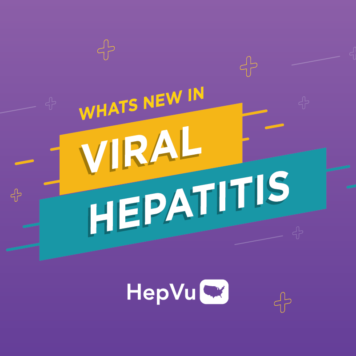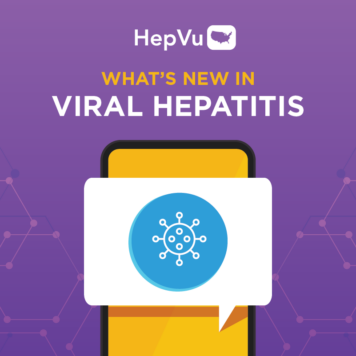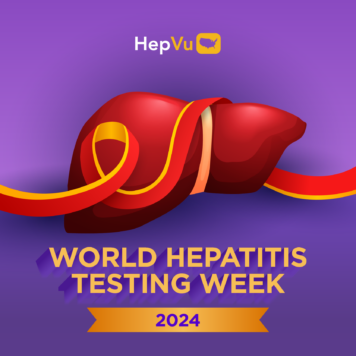James Galbraith, MD is an Associate Professor at the University of Alabama at Birmingham Emergency Medicine Department.
Q: You have spent much of your career as an emergency medicine doctor and a researcher for Hepatitis C. What motivates you to do the work you do?
A: I went into emergency medicine to deliver critical care, but over the last decade it has become increasingly clear that individuals who need critical care represent a small portion of the presentations coming through our doors. In U.S. emergency departments, we are seeing increases in visits from more vulnerable populations who often lack access to primary preventative care, such as uninsured individuals, homeless individuals, and Medicaid recipients. These populations are in danger of slipping through the cracks of the public health system. In order to reach this population and achieve public health priorities for HIV and Hepatitis C, I initiated emergency department testing for these blood-borne infections in 2011 and 2013 respectively. Most exciting was the potential to cure Hepatitis C infection in many of the individuals due to the advent of the new direct-acting agents.
Q: The Society for Academic Emergency Medicine (SAEM) held their annual meeting earlier this month in Indianapolis. Why is screening for blood-borne infections, like Hepatitis C, Hepatitis B, and HIV so important for emergency departments?
Many of the populations disproportionately affected by blood-borne infections like Hepatitis C, Hepatitis B, and HIV also often lack access to preventative screening. The majority of the individuals coming through our emergency department doors have never been tested and are not aware of their status. Emergency departments are a very unique high-volume and target-rich venue for testing. For this reason, U.S. emergency departments need to recognize that they serve as a public health safety net for our most vulnerable populations. For example, our emergency department in Birmingham has geographic reach throughout Alabama that has allowed us to guide multiple public health interventions just from the surveillance data that we have been able to acquire through testing. While CDC’s vulnerable counties report identified four Alabama counties deemed at risk for an HIV outbreak among people who inject drugs, our geospatial analysis looking at our new Hepatitis C diagnoses refined further hotspots within these communities. All of this forced me to think about how best to prevent a Hepatitis C, and potentially an HIV, outbreak from happening in these communities.
We began our Hepatitis C screening by targeting individuals for testing, specifically baby boomers, individuals with a history of injection drug use, people newly diagnosed with HIV, and anyone presenting with new symptoms of liver disease. In the first two years of our program, 95% of the patients tested were baby boomers. We found an overall Hepatitis C antibody prevalence rate of 11% among previously unaware baby boomers. This was happening just as we began to see the opioid epidemic escalate and intensify both throughout the U.S. and especially in central Alabama. I knew we were missing patients who were not telling us about their risk factors for Hepatitis C due to stigma, especially injection drug use behaviors. To address this, in 2015, I initiated universal, non-targeted Hepatitis C testing in our emergency department. Since 2015, we’ve tested over 30,000 unique individuals and identified over 2,300 Hepatitis C antibody positive individuals. Here we have identified Hepatitis C antibody reactivity in one out of every 7 (13.7%) white individuals born after 1965. That is an alarmingly high rate that is largely attributed to the growing syndemic of opioid injection and blood-borne virus infections. We don’t stop with just identifying individuals with Hepatitis C; we also perform viral load confirmation and connect individuals with care, and even help those with addictions to get the care they need. My staff maintains a registry that currently has over 4,000 individuals that we are actively navigating to care.
Q: You have been on the front lines of Alabama’s opioid epidemic and have been a big proponent of syringe services programs. Can you talk about the importance of these programs, and what needs to be done to confront the new face of the Hepatitis C epidemic?
The high rates of Hepatitis C in younger populations through injection drug use forced me to examine better ways to engage with individuals addicted to opioids. It was never my intention to go down this pathway in my career, but one of the biggest concerns in Alabama and nationwide right now is not just a surge in new Hepatitis C infections, but also the risk of HIV outbreaks due to unsterile needle sharing. This is especially true for rural communities.
One of the things we urgently need to prevent outbreaks is syringe services programs, which provide access to clean needles and can reduce blood-borne virus transmission amongst individuals who inject drugs. However, to me, it’s not just about the needles. Syringe services programs provide an opportunity to engage with a population that is hard to reach. These programs help reduce overdoses, can educate patients about the risks of transmission of blood-borne viruses, and can also provide surveillance to this syndemic that is otherwise hidden. Three decades of experience with these programs worldwide shows that they work.
One of the challenges we face is that the regions of the country where these services are most needed often have little or no political support for them. I have had multiple conversations with lawmakers on both sides of the aisle about the need for these programs. We proposed a syringe services bill in the Alabama legislature in 2017 and 2018, but it did not pass in either year. It is taking lawmakers some time to come to grips with the idea of a syringe services program, but you can’t change someone’s beliefs overnight. I will keep trying and I think lawmakers will eventually come around. I just hope it is not too late.
Q: Are there any other ways that medical practitioners can combat the increase in HIV and Hepatitis C coinfections?
The simplest thing we can do, which doesn’t cost any money, is to have health systems and providers better engage people with opioid dependency and injection drug use risk behavior. Stigma is a huge barrier. Patients don’t want to self-report behavior because providers stigmatize it, which breaks down the trust between patient and provider. We need to start meeting people with opioid dependency without judgment. The majority of these individuals may not be ready for complete abstinence, but they are ready for some form of medical assistance.
Beyond that, harm reduction interventions and expanding medication-assisted therapy to individuals with opioid use disorder are the next steps. Buprenorphine or methadone prescribing has been shown to be more effective at averting HIV and Hepatitis C transmission than even syringe services programs. We also need to expand blood-borne virus testing and linkage to care to communities that are at the greatest risk of infection outbreaks. Just by expanding HIV and Hepatitis C screening, especially in emergency departments, we have a chance to engage with these vulnerable patients. Lastly, we also need better opportunities for addiction recovery referral. For a lot of the providers in Alabama, there are long waiting lists to get into clinic and bedded outpatient care.
Q: Personal storytelling can be a powerful tool when talking about hepatitis. Is there a particular story you can share that impacted you?
On the first day our HCV testing program launched in 2013, we identified seven previously unaware baby boomers that were HCV positive. One of these patients, who I will call Mr. Clark, was counseled about his HCV test during his ED visit. The following morning – and not by design or instruction, Mr. Clark surprised me when he found his way to my administrative office. Dressed in Army fatigues, Mr. Clark sat politely across from me at my desk and wanted to know how he could get care for his HCV infection. He did not know anything about HCV and he was afraid. Except for our emergency department visit, he stated he had not seen a doctor since he was a child. He simply wanted to know the next steps. To be honest, I was unprepared to effectively navigate him to care. Having diagnosed seven individuals on the first day, I worried that we had already overwhelmed our linkage to care plans. Mr. Clark was ultimately linked with a primary care physician at a Federally Qualified Health Clinic. Within three months, he had obtained his first visit with an HCV treatment prescriber. However, prior to initiating medications, he disappeared for over a year. I suspect he was slightly disenfranchised with the long waits for clinic visits, referrals, and payor appeals for medications. But in 2015, he returned to us, and at this time we had expanded our access to treatment providers. He has now been treated and is HCV free today. Mr. Clark’s story represents the fears and challenges faced by many living with HCV today.
Dr. Galbraith receives funding from Gilead’s Frontlines of Communities in the United States (FOCUS) program to support HIV and Hepatitis C screening and linkage to the first medical appointment after diagnosis.



